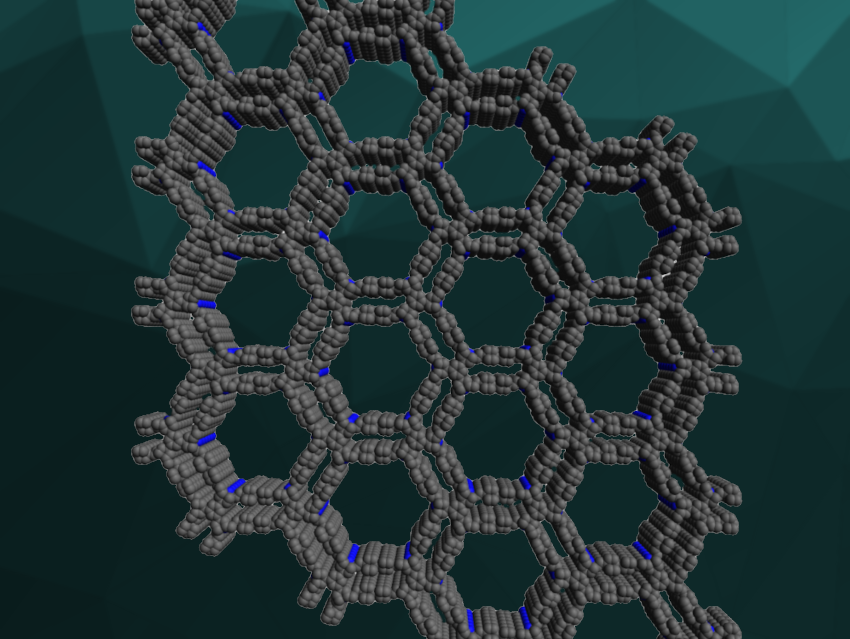Covalent organic frameworks (COFs) are porous crystalline networks made from organic building blocks. They can be useful, e.g., in gas adsorption/separation, sensing, drug delivery, or catalysis. Linking the building blocks of COFs via C=C bonds leads to chemically stable structures with efficient π-electron delocalization. However, it can make the synthesis of the materials more difficult than when the building blocks are connected by reversible bonds.
Fan Zhang, Shanghai Jiao Tong University, China, and colleagues have developed two vinylene-linked COFs with heteroporous structures (example pictured), i.e., pores of different sizes. The team synthesized a hexatopic monomer consisting of a central phenyl ring connected to three ditopic 2,6-dimethylpyridine units. The six methyl groups of this building block can be connected to further phenyl rings to form the desired COFs. The team first prepared the hexatopic building block, 1,3,5-tris(2,6-dimethylpyridin-4-yl)benzene, via a Suzuki–Miyaura cross-coupling of 1,3,5-tribromobenzene and 2,6-dimethyl-pyridine-4-boronic acid. Then, Knoevenagel condensations of this building block and either 1,4-diformylbenzene or 4,4-biphenyldialdehyde gave the desired COFs.
The products were characterized using, e.g., powder X-ray diffraction analysis, infrared spectroscopy, scanning electron microscopy (SEM), and transmission electron microscopy (TEM). They have larger hexagonal pores surrounded by smaller pores and show high chemical stability. According to the researchers, they can efficiently generate active oxygen species upon green-light irradiation and, thus, could be useful for photocatalysis.
- Hexatopic Vertex-Directed Approach to Vinylene-Linked Covalent Organic Frameworks with Heteroporous Topologies,
Zixing Zhang, Shuai Bi, Fancheng Meng, Xiaomeng Li, Mengqi Li, Kaiwen Mou, Dongqing Wu, Fan Zhang,
J. Am. Chem. Soc. 2023.
https://doi.org/10.1021/jacs.3c04410


